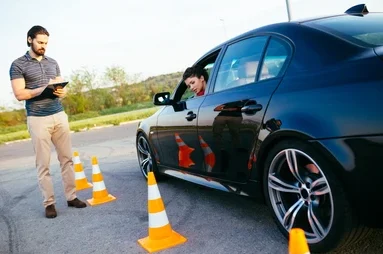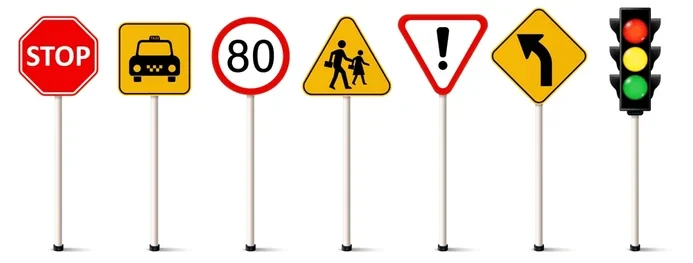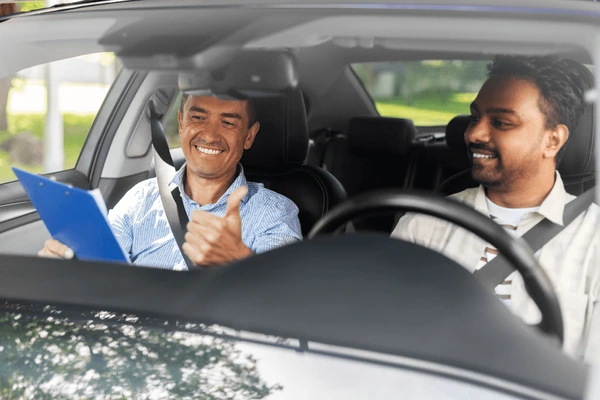Driving is very important for every individual these days, marking a transition towards greater independence. It’s an exciting experience but can also be nerve-wracking for many new drivers. With the right preparation, practice, and patience, mastering the skills of driving becomes easier and more manageable. This guide to driving outlines everything a beginner driver needs to know, from obtaining your learner’s permit to practicing safe driving habits after getting your license. This comprehensive guide to driving will help you feel more confident behind the wheel. Whether you’re just starting out or looking to refine your skills, this guide to driving provides essential tips and insights for success.
Step 1: Getting Your Learner’s Permit
The process of getting a license to operate motor vehicles starts with getting a learner’s permit. Driving privilege permits enable you to drive a car accompanied by a licensed driver before you are ready to take the final exam for the license. To receive your permit, you will have to take a written exam which tends to focus on traffic laws, rules of the road, signs, and actions that are safe and unsafe on the road.
Tips for passing the written test:
- Study your state’s driving handbook: Most states provide a free manual that covers all the laws and regulations you’ll need to know.
- Take online practice tests: These tests are easy to obtain and should be used to acquaint yourself with the format as well as the types of questions that are posed.
- Focus on road signs and traffic rules: It is believed that such sections are ordinarily the most evaluated.
Step 2: Taking Driving Lessons
It is even better if it’s done with an actual professional trainer, as offered in some driving schools. Described driving schools provide rigid lessons containing necessary maneuvers, and teachers can provide beneficial remarks.
Some of the critical skills you’ll learn include:
- Steering and braking: knowing how to control the speed and stop appropriately are the essential aspects of driving.
- Parking: They are essential, particularly, to prevent any traffic mishap while driving in small spaces of the city, for instance, parallel and reverse parking. These can be a little bit confusing at first, but when one masters them, they are very easy.
- Lane discipline: Knowing when and how to change lane is important, particularly on the highways. Signaling and checking your blind spots are part of behaving in a lane discipline way including giving signals.

Step 3: Understanding Traffic Rules
For those who want to become efficient and safe drivers on the road, the following are some of the legal requirements one must go through. Amid the rules, it is important to ensure necessary safety on all routes and minimize accident rates. This guide to driving highlights some key traffic rules every beginner driver should be aware of. Understanding these rules is crucial for any driver, making this guide to driving an essential resource for your journey.
- Right-of-Way: When it comes to crosswalks, you give way to pedestrians; Knowledge of right-of-way usage prevents confusion and possible accidents whenever junctions are involved.
- Speed Limits: It is always important to adhere to the speed limit wherever it has been posted. However, general speed should also be influenced by the prevailing weather conditions and roads. Reckless driving is one of the causes of accidents hence it is legal to drive at safer and allowable speed.
- Using Turn Signals:It is also important to use your turn signals each time you turn or change lanes to inform other drivers of what you plan to do.

Step 4: Preparing for Your Driving Test
Be confident in your driving skills, the next thing is to prepare you for your driving test. The driving test evaluates how you deal with traffic signals and, in metropolitan areas, how well you can perform certain movements and how you handle different traffic situations, includingparking.
Key areas of focus for the driving test include:
- Mirror use: Using your mirrors correctly is very important on the road and will be done during the test, that is why it is advisable to practice.
- Handling intersections: To do this, you will have to show you know which party has right of way at different cross sections.
- Parking: Parallel parking and reverse parking are expected to be hallmarked in the test. I hope these skills are used frequently.

Step 5: After Getting Your License
Passing your driving test and receiving your license is a major achievement, but the learning doesn’t stop there. Safe driving requires ongoing practice and attention to road conditions.
Here are a few tips for becoming a confident, responsible driver after you’re licensed:
- Continue practicing: Practice in challenging driving environments like highways, busy city streets, or adverse weather conditions.
- Stay aware of road conditions: Bad weather, road construction, or heavy traffic can affect your driving. Always adjust your speed and driving style accordingly.
- Prioritize safety: Always wear your seatbelt, avoid distractions (like using phone), and never drive under the influence of drugs or alcohol.
Conclusion
Driving requires patience, practice, and the right guidance. Startwith your learner’s permit, take structured driving lessons, and master traffic rules, you’ll be well on your way to becoming a safe and confident driver. The key is to practice regularly, stay informed about road laws, and continue improving your driving skills even after you’ve passed your test. With time and experience, driving will become second nature, and you’ll enjoy the freedom that comes with being behind the wheel.
FAQs
No, you must have a learner’s permit to practice driving legally. Without it, you could face fines or other legal consequences if caught driving.
Driving anxiety is common among new drivers. Start by practicing in quiet, low-traffic areas to build confidence. Gradually progress to more complex driving environments as you become more comfortable. Deep breathing exercises can also help calm your nerves.
While it’s not required, taking lessons from a professional driving instructor can be extremely helpful. Instructors have experience teaching beginners and can provide expert guidance on safe driving techniques.

